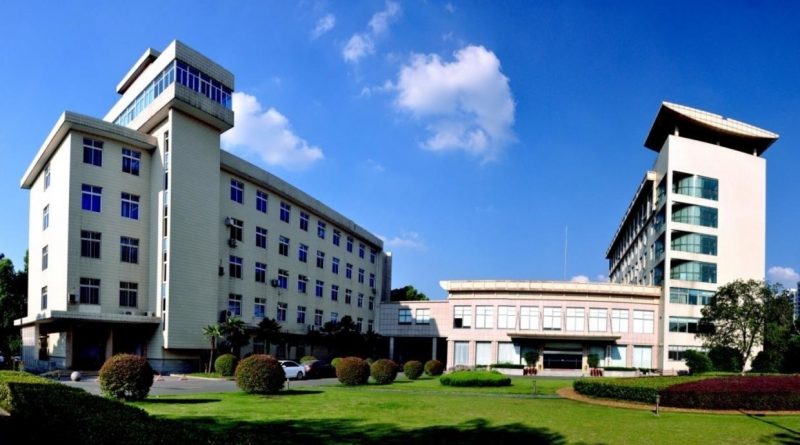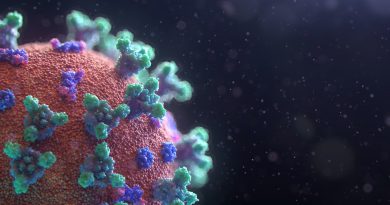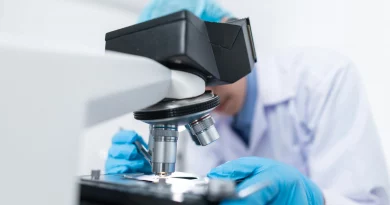Biosafety Level 4 Laboratory, Wuhan Institute of Virology, China
The very first biosafety (level 4) BSL-4 laboratory in mainland China was opened in 2015, at a cost of around $44 million by the Wuhan Institute of Virology. The Wuhan BSL-4 laboratory took more than ten years to complete from its conception in 2003.
Biosafety (Level 4) BSL-4 Laboratory
The Wuhan BSL-4 laboratory is dedicated to the research of severe infectious diseases. Biosafety laboratories are divided into four biosafety levels: BSL-1, BSL-2, BSL-3, and BSL-4. The National Biosafety Level 4 Laboratory has the highest level of biological safety currently operated by human beings and is known as the “aircraft carrier” in the field of virology. Except for China, the only countries that currently have BSL-4 laboratories in the world are France, Canada, Germany, Australia, the United States, the United Kingdom, Sweden, and South Africa.
The Wuhan Biosafety Level 4 Laboratory adopts a design concept similar to the box-in-box of the BSL-4 laboratory in Lyon, France. The entire laboratory is suspended and divided into 4 floors. From bottom to top, the bottom layer is for the sewage treatment and life support system; the second layer is the core biosafety level 4 laboratory; the third layer is the filter system; the interlayer between the second and third layers is the pipe system; the uppermost layer is the air conditioning system.

Wuhan National Biosafety Level 4 Lab Location
The National biosafety laboratory is located approximately 30 kilometers away from the South China Seafood Wholesale Market. This “wet market” facilitating live poultry trade, was widely suspected to be the epicenter for transmission of viral pathogenic coronaviruses, specifically the zoonotic transfer of Covid-19 to human beings. The Market in Wuhan was closed on the 1st of January 2020 after it was suspected to be the likely starting point for the outbreak of this coronavirus.
Consequently, the Wuhan Institute biosafety (level 4) BSL-4 laboratory is analyzing the 2019–2020 New Coronary Pneumonia (COVlD-19) outbreak. The Laboratory has strong ties to the Galveston National Laboratory in the University of Texas. In 2020, biologist Richard H. Ebright called the Institute a “world-class research institution that does world-class research in virology and immunology”.
The new coronavirus outbreak
In January 2020, the Institute of Virology was rumoured as a source for the 2019–20 coronavirus outbreak as a result of allegations of bioweapon research. According to a report by the Central News Agency quoting Bejing Today, Huang Yanling, a postgraduate student of the Wuhan Institute of Virology of the Chinese Academy of Sciences, was the first “patient zero” infected with the Wuhan pneumonia and began to spread the virus; however, researchers at the virus laboratory denied these claims and guaranteed that no one was infected by the virus.
The claim was debunked as a conspiracy theory by The Washington Post in a piece titled: “Experts debunk fringe theory linking China’s coronavirus to weapons research“.
The Post cited U.S. experts who explained why the Institute was not suitable for bioweapon research, that most countries had abandoned bioweapons as fruitless, and that there was no evidence that the virus was genetically engineered.
In February 2020, the New York Times reported that a team led by Shi Zhengli, a researcher at the Institute, were the first to identify, analyze and name the genetic sequence of the Novel coronavirus (2019-nCoV), and upload it to public databases for scientists around the world to understand.
During January and February 2020, the Institute was subject to further conspiracy theories and concerns that it was the source of the outbreak through accidental leakage, which it publicly refuted.
The exact source of the Wuhan coronavirus ( (2019-nCoV) outbreak is of yet unknown.
The Wuhan Institute of Virology
The Wuhan Institute of Virology established the Chinese Academy of Sciences Biosafety Research Center. The center was jointly constructed by the Chinese Academy of Sciences, the National Health Committee and the People’s Government of Hubei Province. Construction was approved in November 2018.
The scientific research layout includes the Center for Molecular Virology and Pathology, the Center for Analytical Microbiology and Nanobiology, the Center for Resources and Application of Microbial Toxins, and the Center for Emerging Infectious Diseases. There are a total of 34 research subject groups.
WHO Investigators visit the Wuhan Institute of Virology
In January 2021, World Health Organization (WHO) investigators visited the Wuhan Institute of Virology, to probe into the origins of the Covid-19 pandemic. On Tuesday, the 2nd February 2021, the first details of its fact-finding mission into the virus’s origins were released. The head of the World Health Organization mission, Dr. Peter Ben Embarek, said it was “extremely unlikely” that the novel coronavirus spread from a laboratory leak in the city of Wuhan. Dr. Embarek also said that work to identify the origins of Covid-19 pointed to a “natural reservoir” in bats, but it was not likely that this happened in Wuhan.
The Wuhan Institute Network
The Institute is also comprised of the National Collection Center for Microbial and Toxin Collection designated by the National Health Commission, the National African Swine Fever Regional Laboratory, and the State Key Laboratory of Virology (Co-constructed with Wuhan University), China-Dutch-French Joint Laboratory of Invertebrate Virology, Key Laboratory of Highly Pathogenic Pathogens and Biosafety of the Chinese Academy of Sciences, Hubei HIV Screening Laboratory, Hubei Province Viral Disease Engineering technology research center and other research technology platforms. China’s only “China Virus Herbarium” with modern display means was created, and it was the first batch of “National Youth Science and Technology Demonstration Bases for Science and Technology”. Virologica Sinica, an English-language journal hosted by Wuhan Virus, is included in international authoritative databases such as SCI and PubMed, with an impact factor of 2.467 in 2019. At the same time, Wuhan Institute of Virology is also the anchor unit of the Hubei Province and Wuhan Institute of Microbiology and the Youth Working Committee of the Chinese Immunological Society.
The management system has five functional departments, including the General Office, the Organizational Personnel Office, the Scientific Research Planning Office, the Finance Office and the Graduate Office. The support system includes technical support departments such as Wuhan National Biosafety Laboratory, Public Technical Service Center, Network Information Center, and the Editorial Department of “Chinese Virology (English)”.
Wuhan Institute of Virology currently has two graduate education programs for first-level disciplines in biology and basic medicine, and five secondary education graduate programs for biochemistry and molecular biology, microbiology, immunology, pathogenic biology, and biology and medicine. There are two post-doctoral research mobile stations in biology and basic medicine.
Wuhan Institute using remdesivir
In February 2020, the Wuhan Institute of Virology applied for a patent in China for the use of remdesivir, the experimental drug developed by Gilead Sciences to treat SARS and Ebola. The Wuhan Institute found that remdesivir inhibited the virus in-vitro. The move raised some concerns regarding international intellectual property rights. In a statement, the virology institute said it would not exercise its new Chinese patent rights “if relevant foreign companies intend to contribute to the prevention and control of China’s epidemic”.
More about remdesivir: Remdesivir shows promise in treatment against COVID-19;
Latest Projects
- Eli Lilly to Invest $6 Billion in New API Manufacturing Facility in Alabama, USA
 The new Huntsville, Alabama site will produce small molecule and peptide medicines, including oral GLP-1 orforglipron Eli Lilly and Company
The new Huntsville, Alabama site will produce small molecule and peptide medicines, including oral GLP-1 orforglipron Eli Lilly and Company - Eli Lilly’s Next-gen $6.5B API and GLP-1 Orforglipron Facility, Houston, Texas, USA
 Eli Lilly and Company has announced plans to build a $6.5 billion next-generation active pharmaceutical ingredient (API) manufacturing facility at
Eli Lilly and Company has announced plans to build a $6.5 billion next-generation active pharmaceutical ingredient (API) manufacturing facility at - AstraZeneca Unveils $300 Million Cell Therapy Manufacturing Facility in Rockville, USA
 Global biopharmaceutical leader AstraZeneca has officially opened a new $300 million state-of-the-art cell therapy manufacturing facility in Rockville, Maryland, marking
Global biopharmaceutical leader AstraZeneca has officially opened a new $300 million state-of-the-art cell therapy manufacturing facility in Rockville, Maryland, marking - Roche to Invest $50B in US Pharma Expansion Set To Flip Trade Deficit
 In a transformative move for the U.S. healthcare manufacturing sector, Roche unveiled plans to invest $50 billion in American pharmaceutical
In a transformative move for the U.S. healthcare manufacturing sector, Roche unveiled plans to invest $50 billion in American pharmaceutical - MSD Acquires WuXi Vaccines Facility in Dundalk for €500m
 In a significant acquisition move, pharmaceutical giant MSD has agreed to acquire the WuXi Vaccines manufacturing facility in Dundalk, Ireland.
In a significant acquisition move, pharmaceutical giant MSD has agreed to acquire the WuXi Vaccines manufacturing facility in Dundalk, Ireland. - Infrareal to Take Over Takeda’s Gene and Cell Therapy Site in Orth, Austria
 Infrareal Holding plans to take over Takeda’s pharma and biotech site specialising in gene and cell therapies in Orth, Lower
Infrareal Holding plans to take over Takeda’s pharma and biotech site specialising in gene and cell therapies in Orth, Lower





